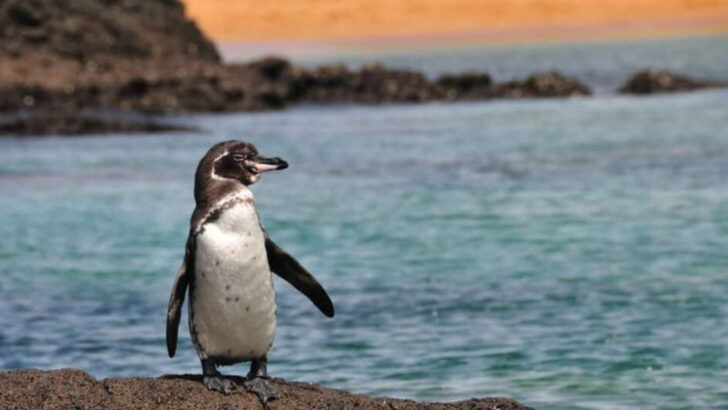The Galápagos Penguin is a remarkable species that stands out in the penguin family due to its unique habitat and characteristics.
These penguins are the only species found north of the equator, living in the warm climate of the Galápagos Islands.
Their adaptability and distinct features make them a subject of fascination for scientists and nature lovers alike.
Here are 10 amazing facts about the Galápagos Penguin that highlight its uniqueness and survival strategies in a tropical environment.
Smallest Penguin Species
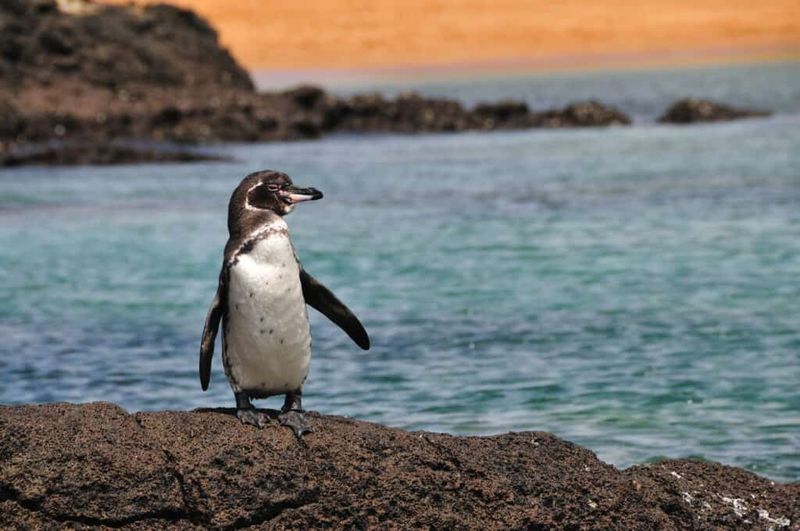
The Galápagos Penguin holds the title for being one of the smallest penguin species. Standing at about 49 cm tall, these petite creatures weigh between 1.7 and 2.6 kg.
Despite their small size, they are skillful swimmers, using their flippers to propel themselves through the waters surrounding the Galápagos Islands. Their diminutive stature aids in their survival, allowing them to maneuver through rocky crevices and escape potential predators.
Unlike their larger relatives, their light weight enables quick movements, crucial for catching small fish and other marine life essential to their diet.
Unique Breeding Habits
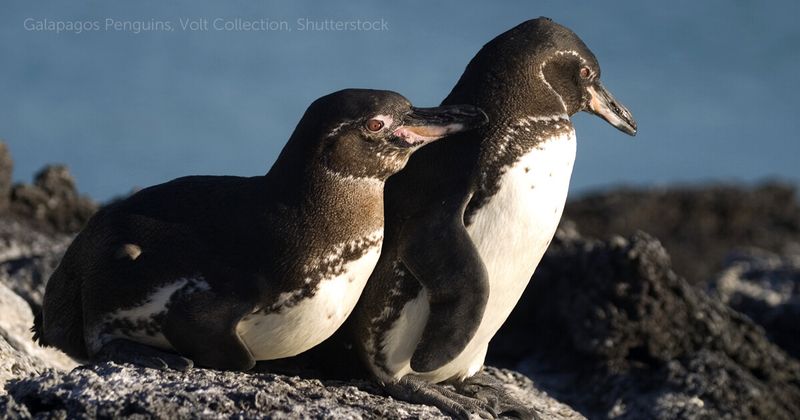
Unlike most penguin species, the Galápagos Penguin does not have a fixed breeding season. Instead, they breed all year round, a strategy that takes advantage of favorable environmental conditions whenever they occur.
Breeding success is closely tied to food availability, mainly small fish like sardines. These penguins lay two eggs in shaded crevices to protect them from the sun’s harsh rays. Both parents share incubation duties, ensuring the eggs’ survival in the challenging tropical climate.
Their flexible breeding habits highlight their adaptability to the changing conditions of the Galápagos Islands.
Remarkable Thermoregulation
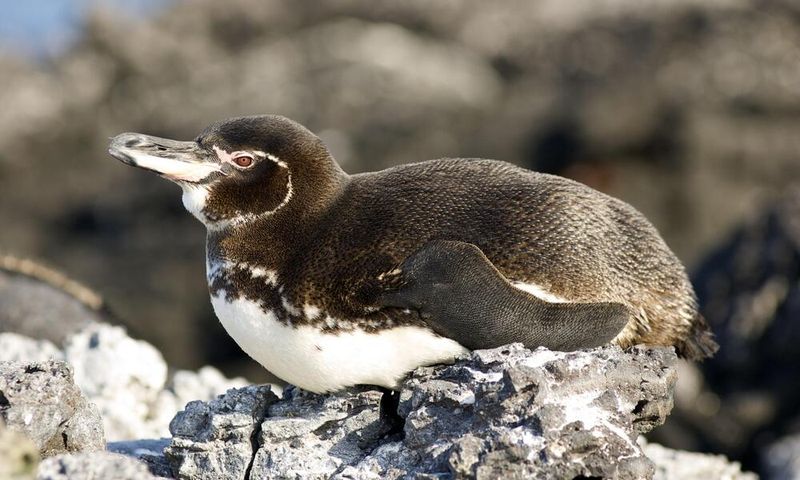
The warm climate of the Galápagos Islands poses a challenge for a species adapted to cooler environments. However, the Galápagos Penguin has developed remarkable thermoregulation techniques.
They pant like dogs to dissipate heat and keep cool. Additionally, they extend their flippers away from their bodies, allowing heat to escape. By spending a significant amount of time in cool ocean waters, these penguins effectively manage their body temperature.
Their ability to regulate heat showcases their incredible adaptation skills, ensuring survival in a habitat that contrasts sharply with the icy homes of their relatives.
Endangered Status
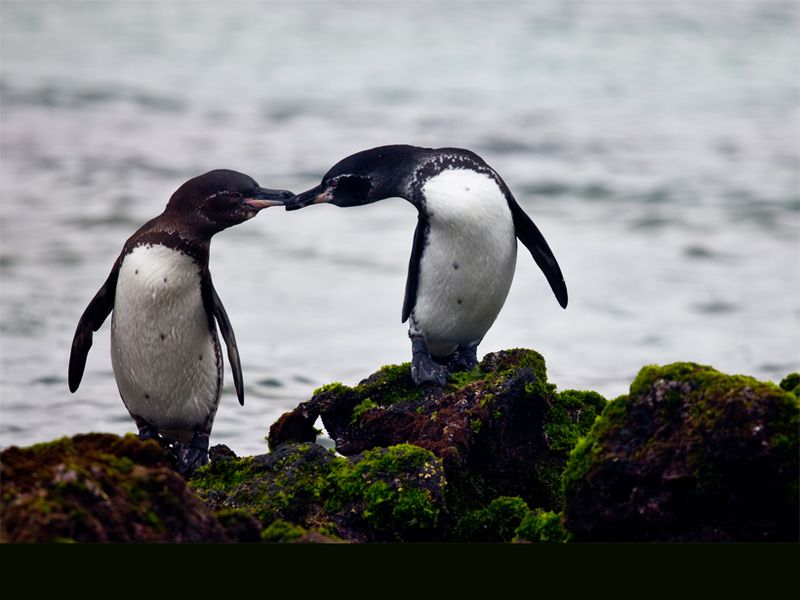
The Galápagos Penguin is classified as endangered, with only a few thousand individuals remaining. Climate change and human activities pose significant threats to their survival.
Changes in sea temperature can affect food availability, directly impacting their breeding success. Conservation efforts focus on habitat protection and reducing human disturbances. Despite challenges, there is hope for their recovery, thanks to dedicated conservation programs.
The story of the Galápagos Penguin serves as a reminder of the delicate balance required to maintain biodiversity in unique ecosystems like the Galápagos Islands.
Natural Predators
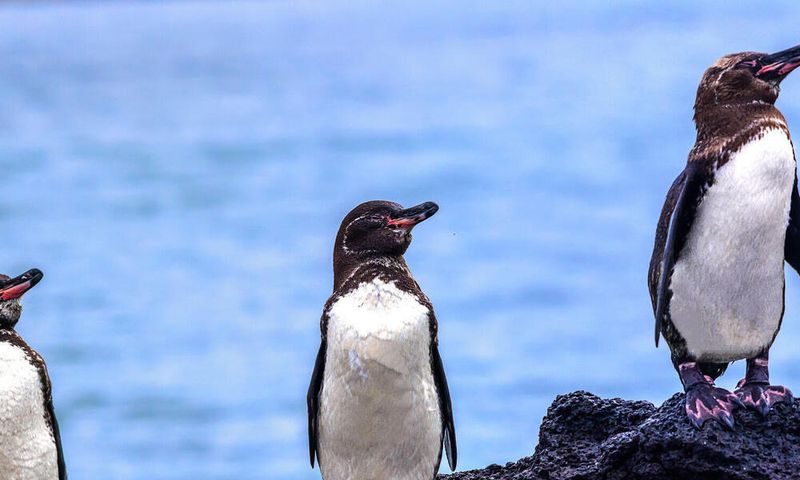
In their natural habitat, the Galápagos Penguins face threats from several predators. In the ocean, they must be wary of sharks and fur seals, while on land, introduced species like cats and rats pose dangers to their eggs and chicks.
The penguins’ agile swimming skills and use of rocky crevices as nests help them evade these threats. Their vigilance is crucial for survival in an environment where they must constantly be on the lookout for danger.
Understanding their predator-prey dynamics is essential for developing effective conservation strategies.
Adaptive Feeding Techniques
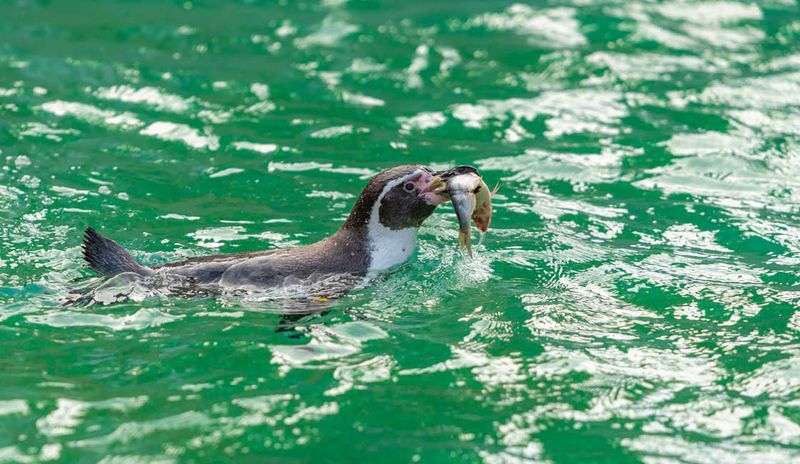
Galápagos Penguins have developed adaptive feeding techniques to thrive in their marine environment. They primarily feed on small fish, such as sardines and mullets, hunting in the nutrient-rich waters of the Galápagos.
Their streamlined bodies allow them to dive swiftly, and they use their sharp beaks to catch prey. These penguins are known for their cooperative hunting strategies, often working in groups to herd fish into compact areas, making them easier to catch.
Their feeding habits are a testament to their adaptability and the rich biodiversity of their island habitat.
Social Behavior
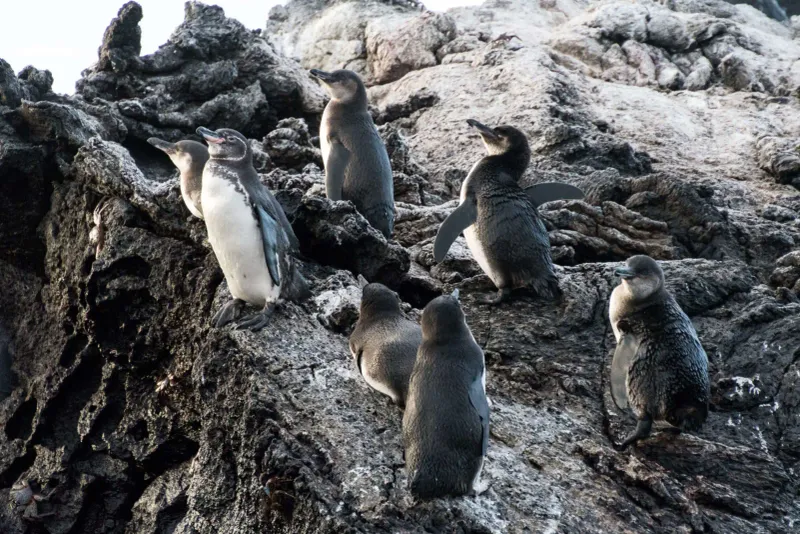
Galápagos Penguins are known for their social nature, often seen in groups or pairs engaging in various interactions.
They communicate through vocalizations and body language, such as head bobbing and flipper waving. Social bonds are crucial for breeding and raising chicks, as penguin pairs rely on cooperation. Their social structure helps them protect each other from predators and manage the challenges of their environment.
Observing their interactions offers insights into the complex social lives of these remarkable birds and highlights the importance of community in their survival.
Distinctive Appearance
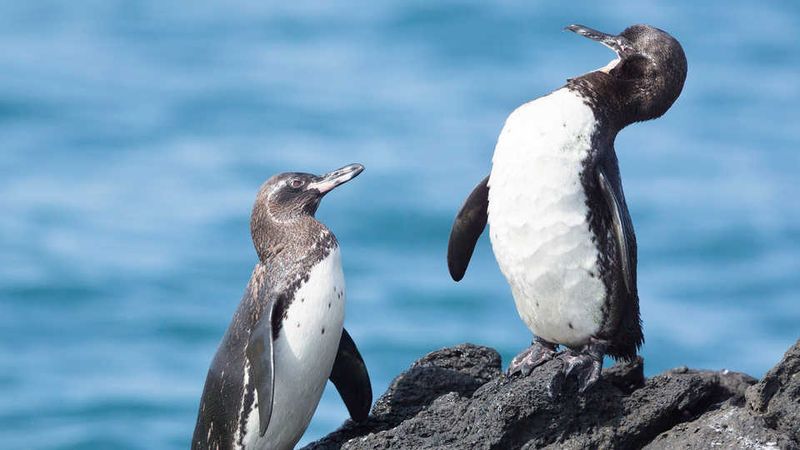
With their distinctive black and white plumage, Galápagos Penguins are a striking sight. Their black feathers form a unique horseshoe-shaped band across their chest, while their white underbellies provide camouflage against predators when swimming.
These markings not only serve as a form of identification but also play a role in social interactions and mating displays. Their sleek bodies and sharp beaks are perfectly adapted for their marine lifestyle.
The Galápagos Penguin’s appearance is a blend of beauty and functionality, reflecting their adaptation to their tropical island home.
Historical Significance
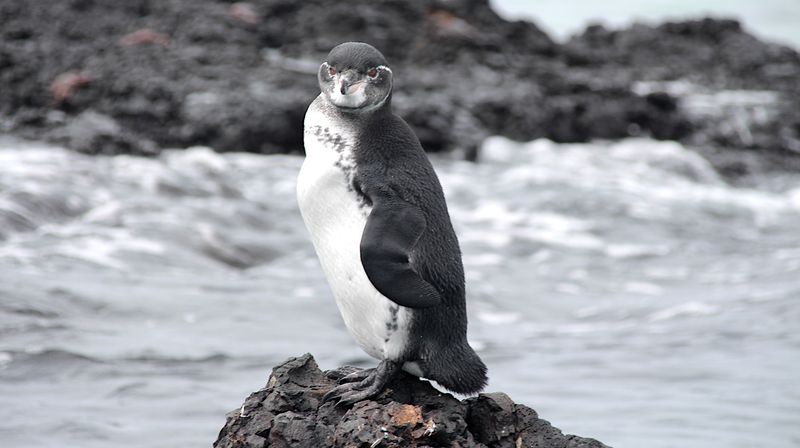
The Galápagos Penguin holds historical significance as one of the unique species that inspired Charles Darwin’s theory of evolution.
Observations of these penguins, along with other island species, led to groundbreaking insights into natural selection. Their presence in the Galápagos is a living testament to evolutionary processes and biodiversity.
The penguins serve as a symbol of the ecological wonders of the islands, capturing the imagination of scientists and naturalists alike. Their story is intertwined with the history of evolutionary science, making them an iconic species of global importance.
Challenges of Climate Change
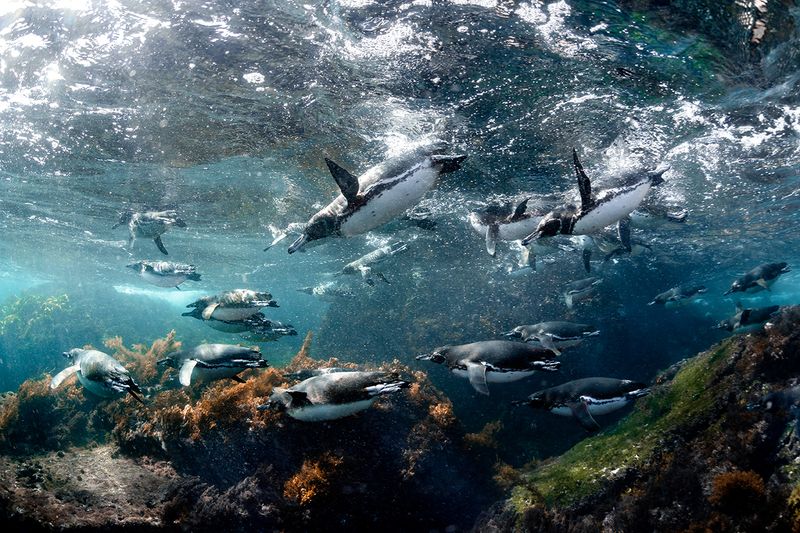
Climate change presents a formidable challenge to the Galápagos Penguins. Rising temperatures and changing ocean currents disrupt food availability, affecting their ability to breed and raise chicks successfully.
The increase in severe weather events poses additional risks to their habitat. Conservationists are working to mitigate these impacts through habitat protection and restoration projects. Despite these challenges, the resilience of the Galápagos Penguin offers hope for adaptation and survival.
Continued research and conservation efforts are vital to ensuring the future of this unique species in a rapidly changing world.

